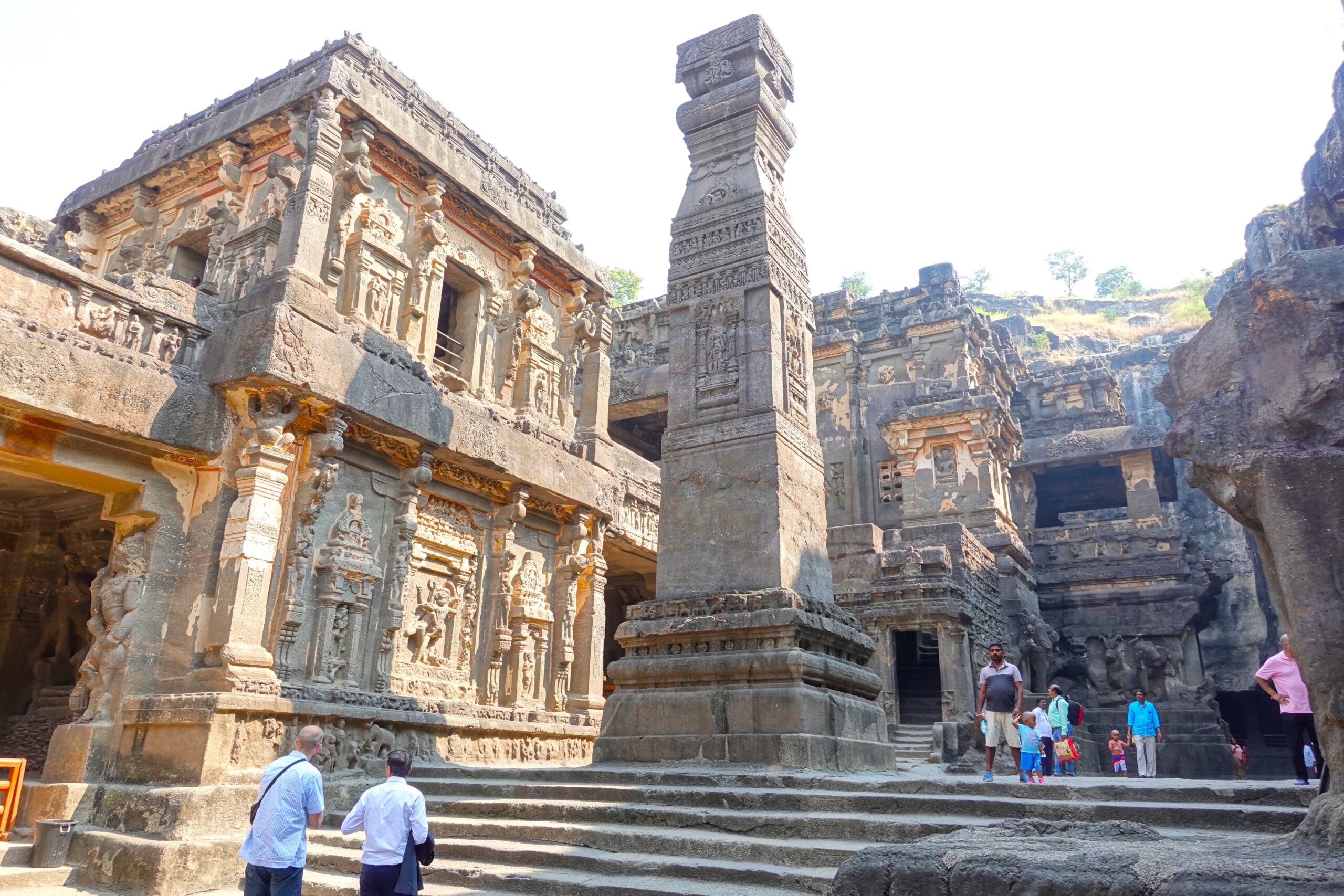Travels to Buddhist sites in India and Sri Lanka (22)
The Kailasanatha Temple in Ellora is astonishing! What is the marvelous sculpture architecture that took 100 years to carve out of the rocky hill!
Previous article "(21) The Buddha image at Ellora Cave Temple was so shocking that it electrified my whole body! I highly recommend it as one of the best places in India!" I introduced the wonderful Buddhist temples of Ellora in the previous article, and in this article, I would like to introduce the Kailasanatha Temple, a Hindu architecture that represents the Ellora site.
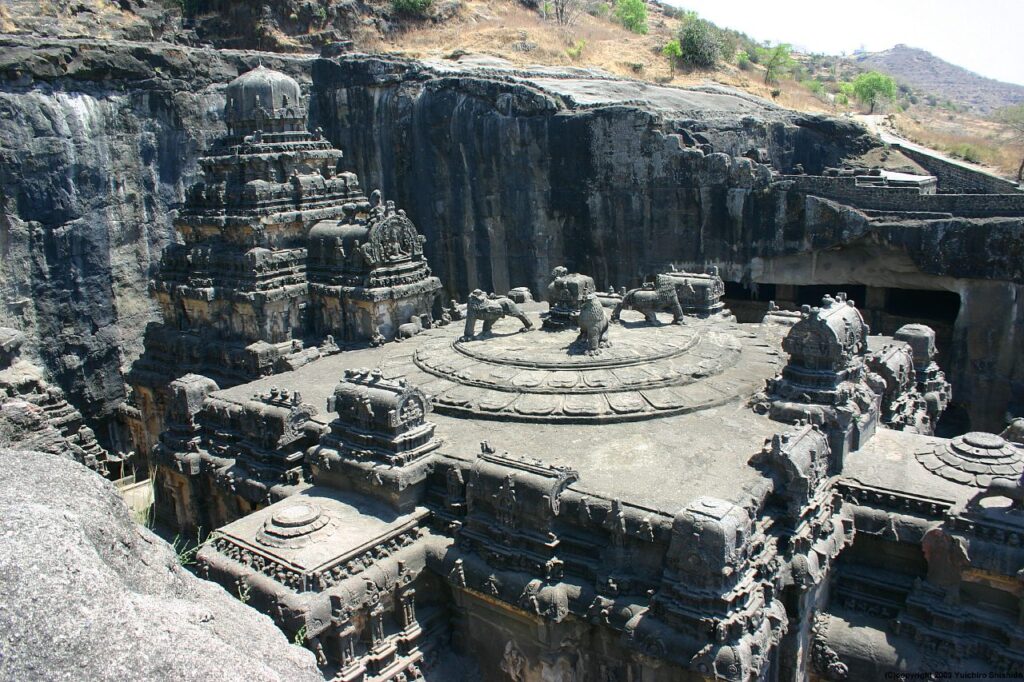
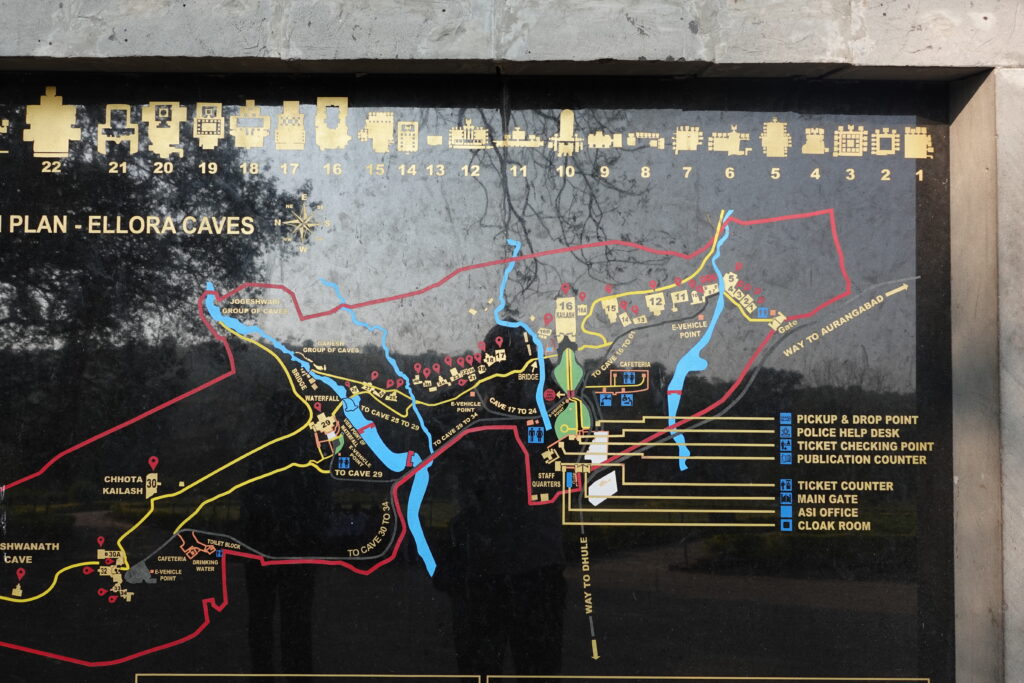
As a recap, here is a schematic of the entire Ellora. As you can see, Ellora is called the Grotto Cluster, and there are numerous caves carved into the rock. These temples were created by literally carving out the rocky mountains in front of us.
As shown in the above diagram, Cave 1 begins on the right (south), followed by Buddhist caves up to Cave 12, Hindu caves (Caves 13 to 29), and Jain caves (Caves 30 to 34).
Cave 16, which is depicted prominently and prominently in this floor plan, is the Kailasanatha Temple, which I will introduce hereafter.
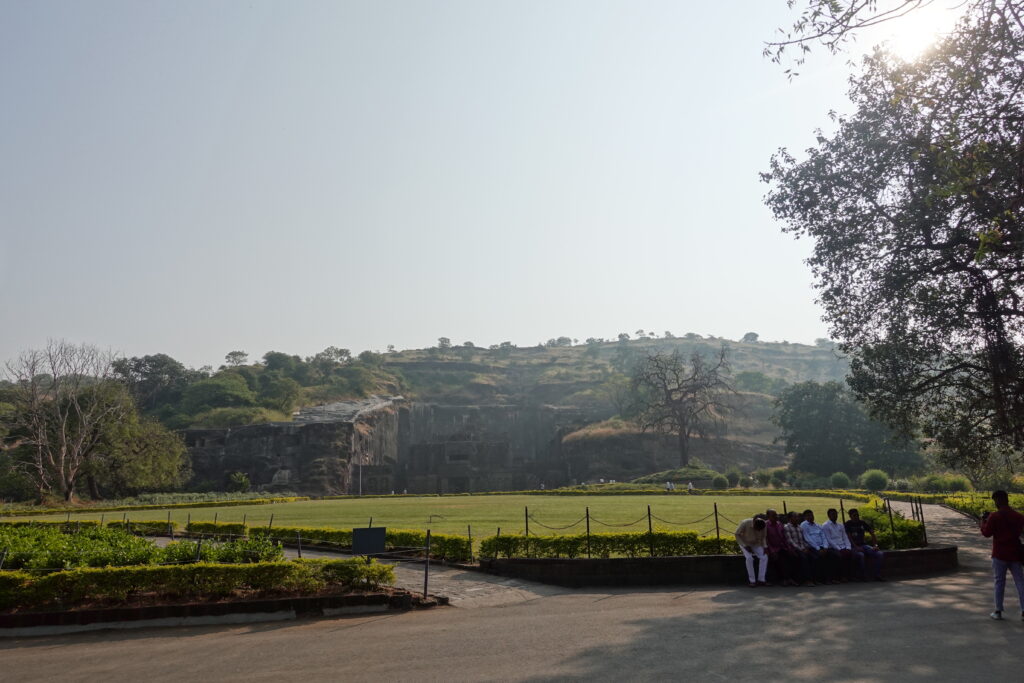
As I mentioned briefly in my previous article, Cave 16, the Kailasanatha Temple, appears directly in front of the entrance to the Ellora Grottoes.
To be honest, from a distance, I could not tell whether this place was really a masterpiece of architecture representing India. Rather, it was more like a letdown.
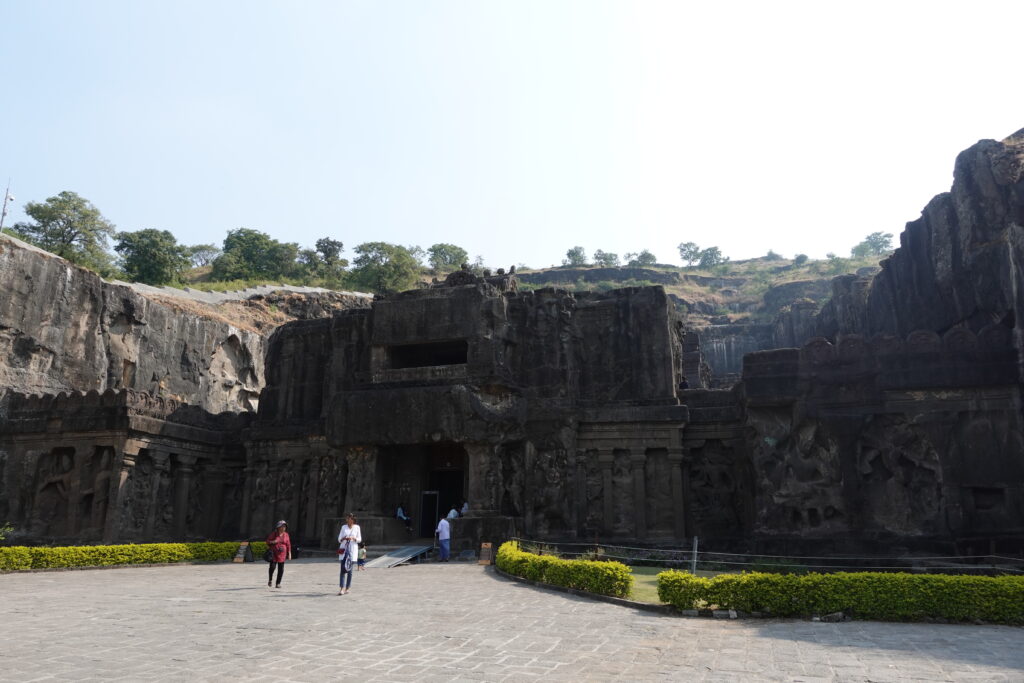
However, when I finally came to the front of this cave temple, I was surprised at its enormity. It was completely different when I saw it up close.
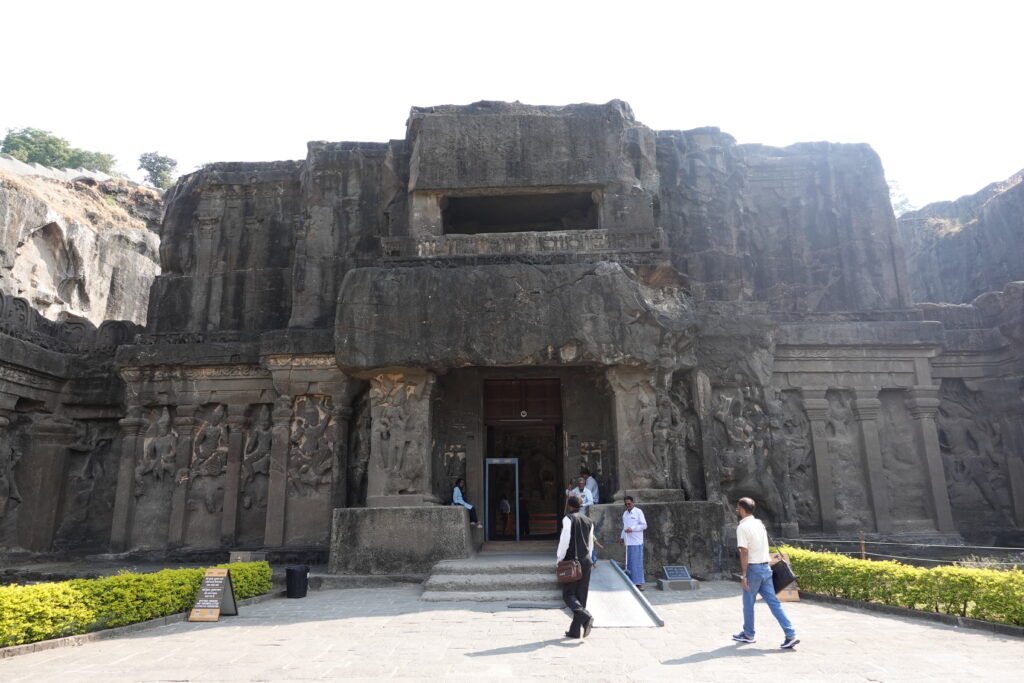
It is truly a towering stone wall. And this is only the entrance. The tension of what lies beyond this wall is mounting.
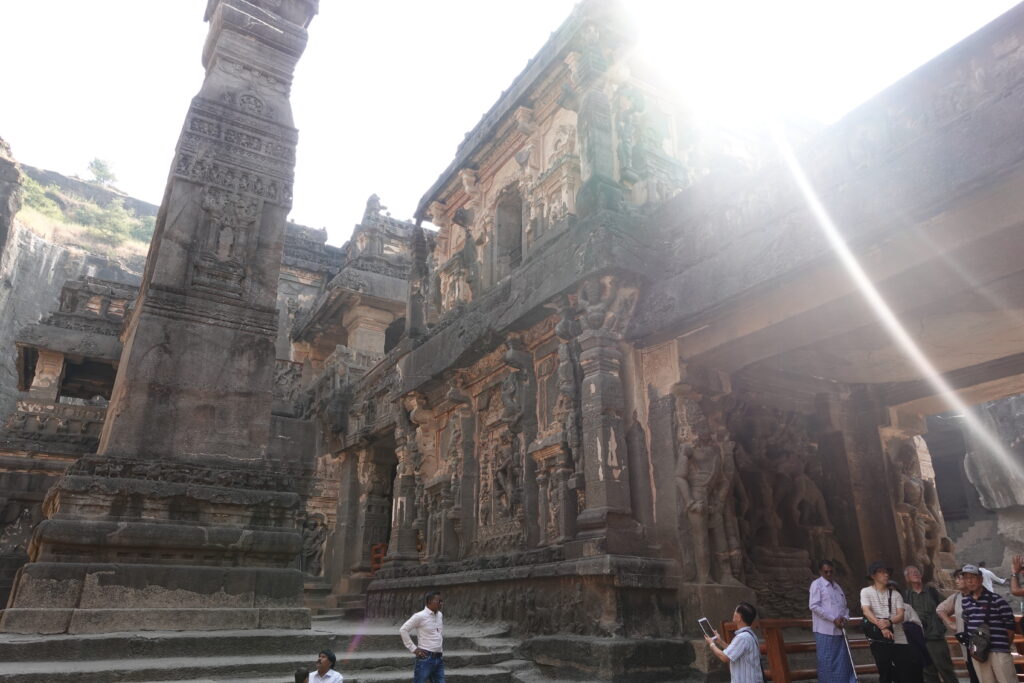
Hey, what's this..!
Frankly, I am at a loss for words. I don't know how to describe this on so many scales.
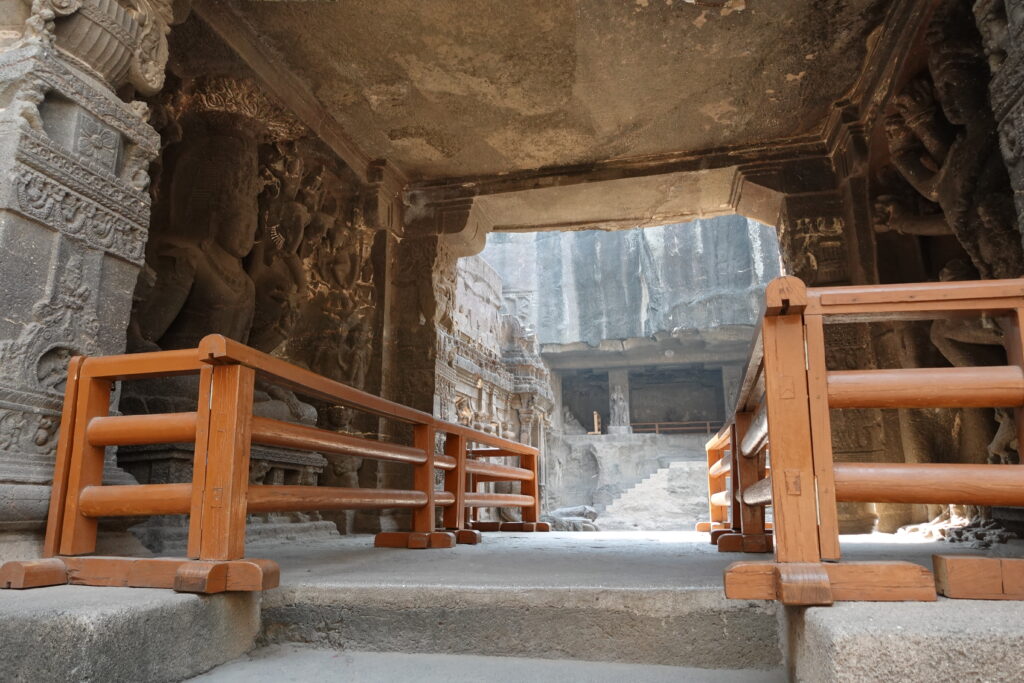
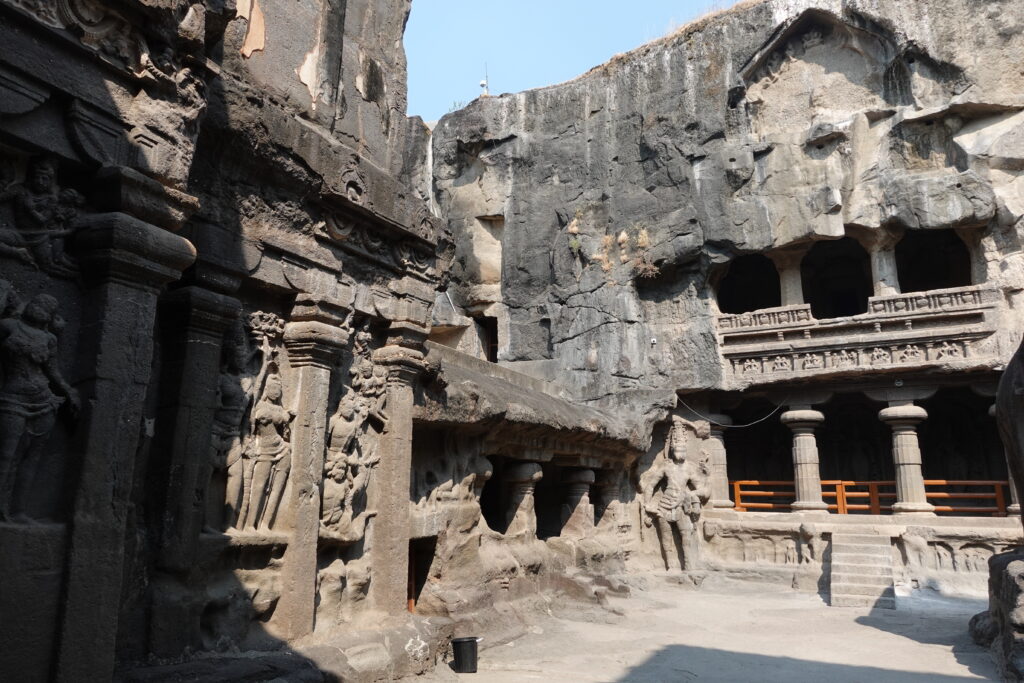
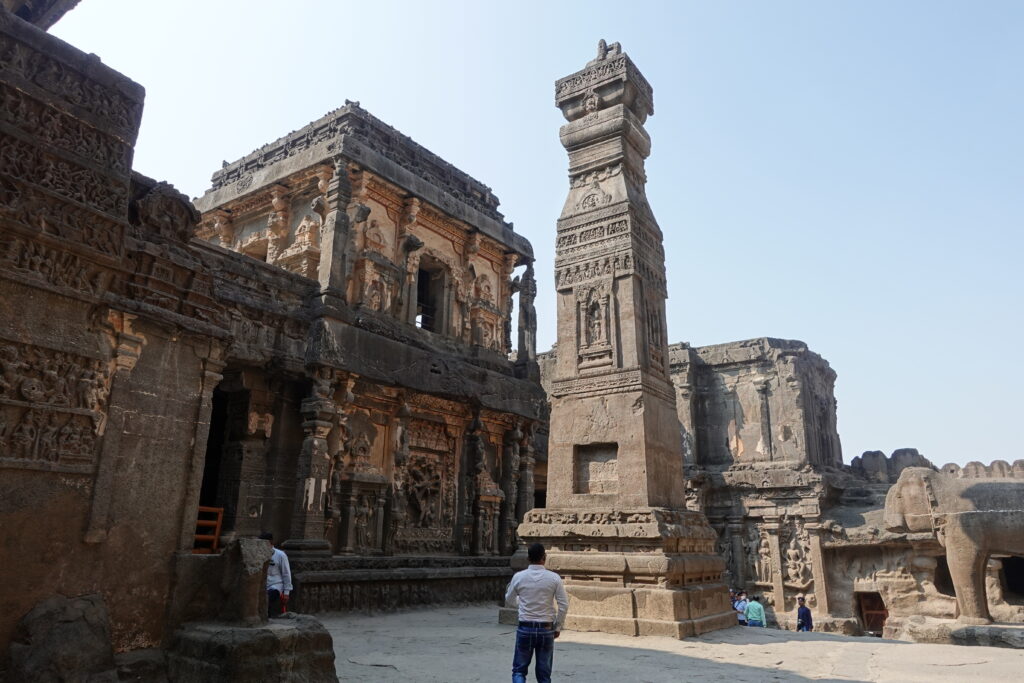
There are places where the colors still remain. But they are still huge, after all...! I can only curse my lack of vocabulary. But, I think anyone who has been here would be like this. Even Tolstoy would be at a loss for words if he saw this scene.
And as I continued onward, that is when I was taken aback.
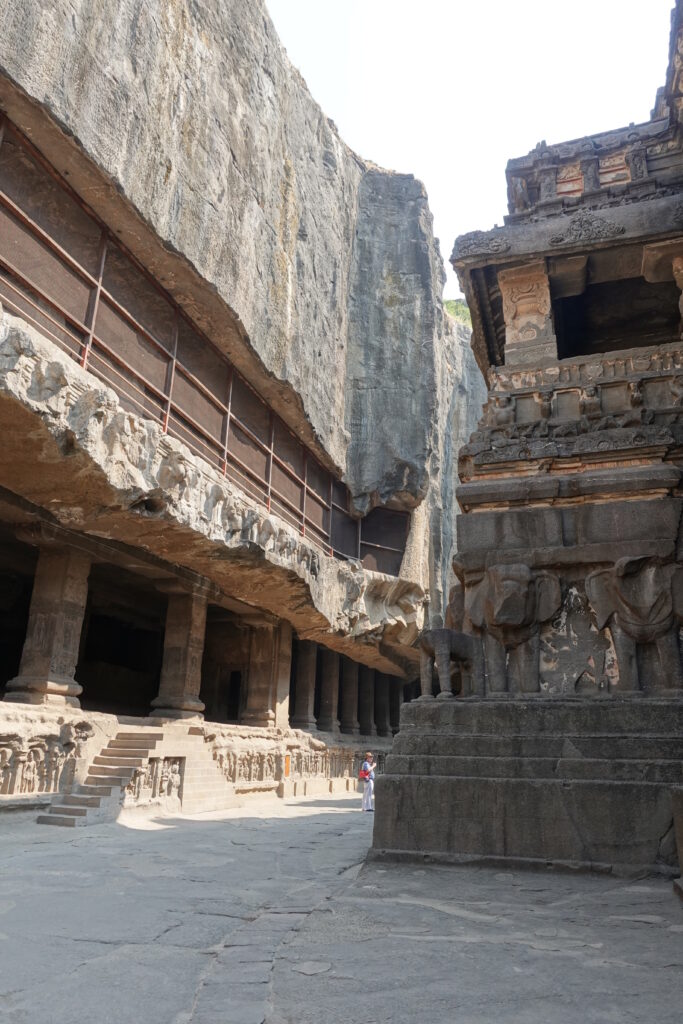
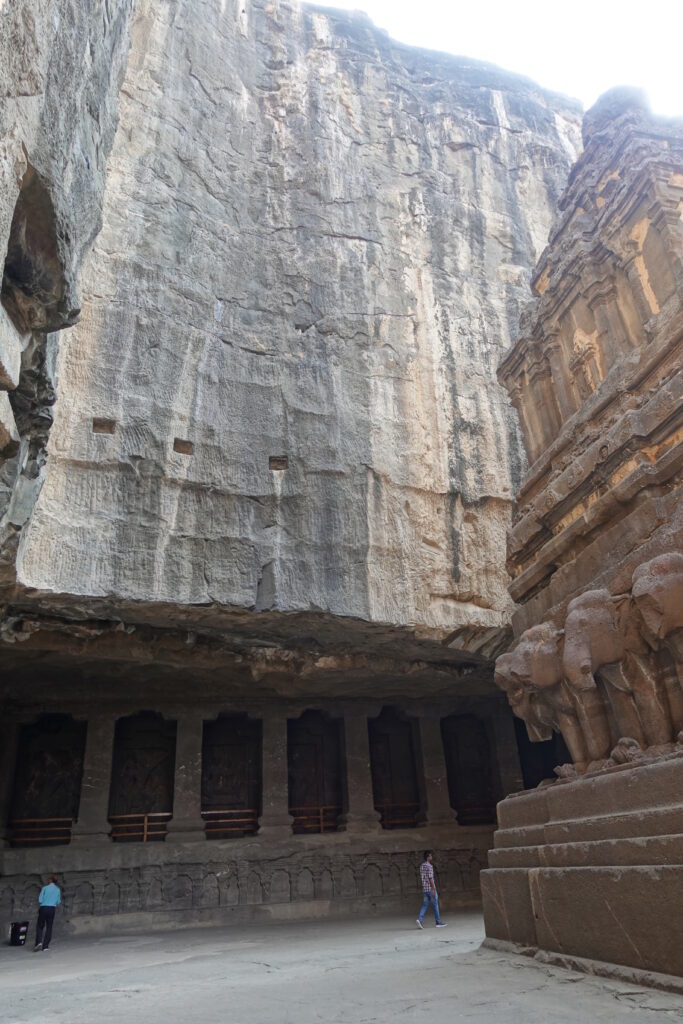
Both sides of the temple are truly walls of rock, but as you can see, the rocks stick out like roofs! Why don't they fall off!
The construction of this Kailasanatha temple is believed to have begun around the 8th century.
Moreover, the method used to build this temple is nothing short of insane. The temple was built by carving right down from the top of a rocky hill. The temple itself is a sculptural work carved out of a huge rock pile, not a hole dug horizontally like a cave.
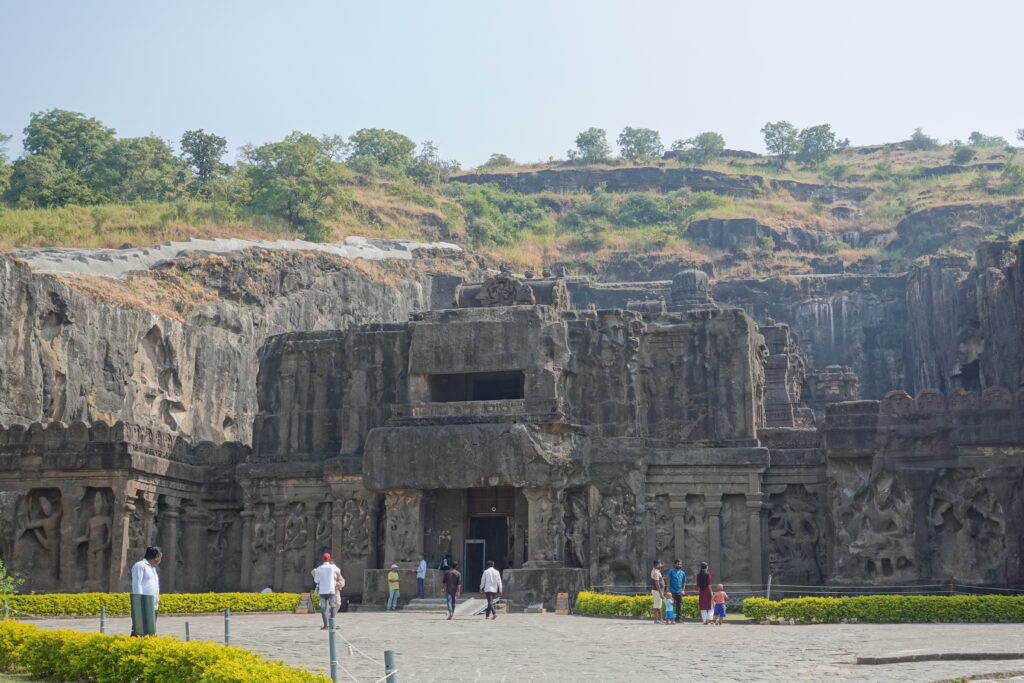
This picture may give you an idea of the atmosphere. This was originally a single rocky hill. They literally carved it from the top down, and then penetrated to the bottom. How did the Indians come up with such an incredible idea? And this work went on for nearly 100 years.
It took about 100 years to complete the carving. As one would expect from India, a country of eternity, the sense of time is too magnificent.
Let's look at this and then look again at the previous photo.

The place where we are standing now was originally a rocky hill. Even the top of the tower in front of us was originally a rocky hill. This space was created by carving it all from the top. It is unbelievable.
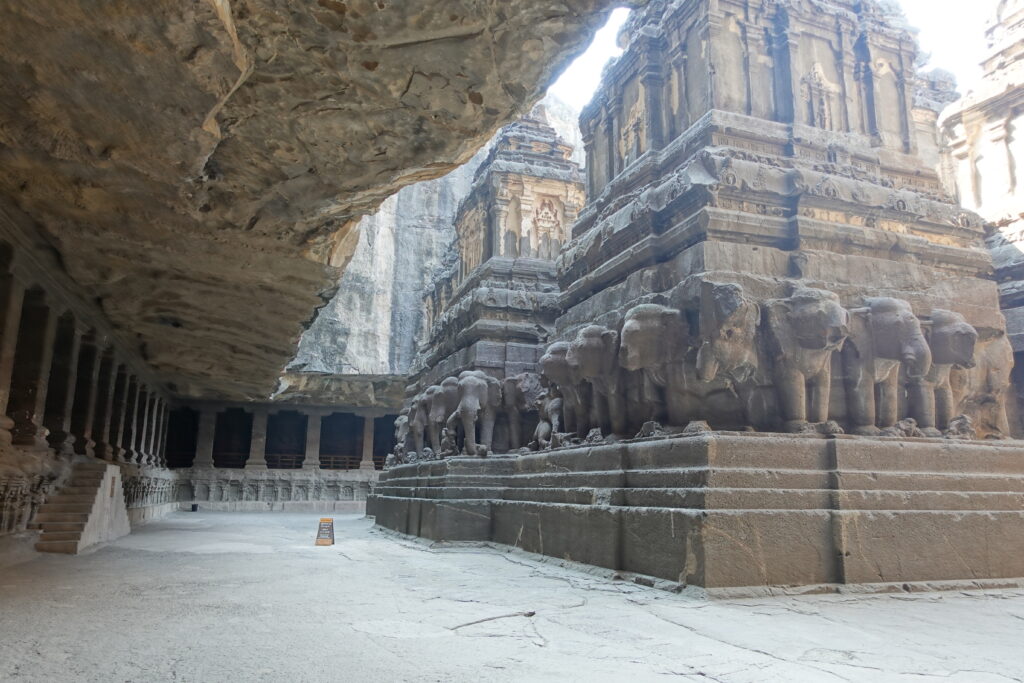
I think you can feel the power of the jutting rocks. In this unreal space, I could no longer understand what was going on.
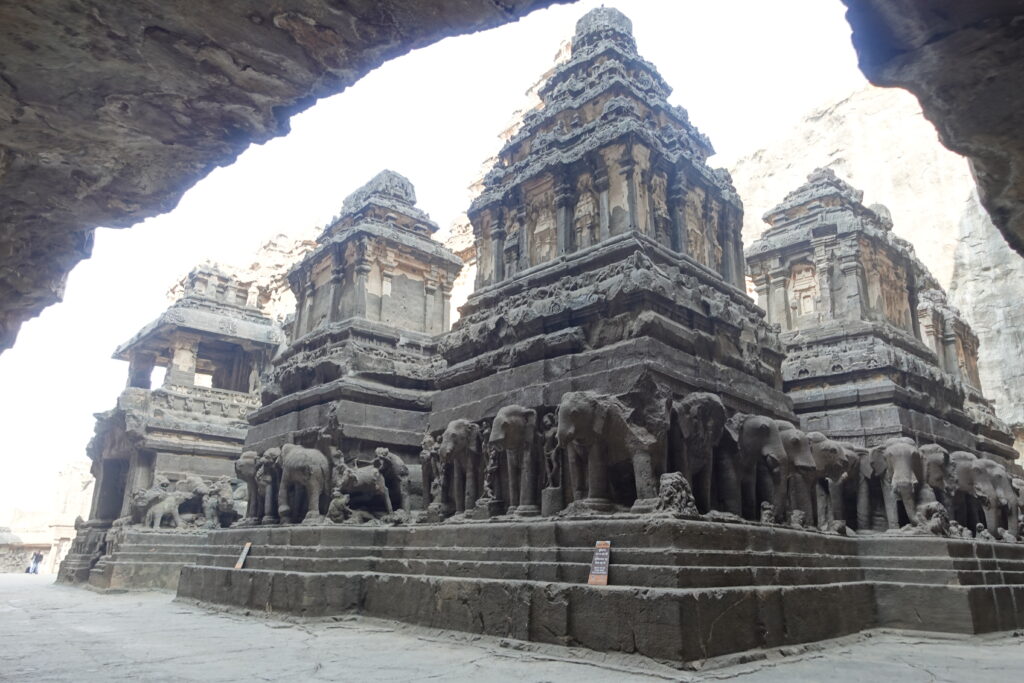
Elephant sculptures support the temple. Each of them is carved with great precision.
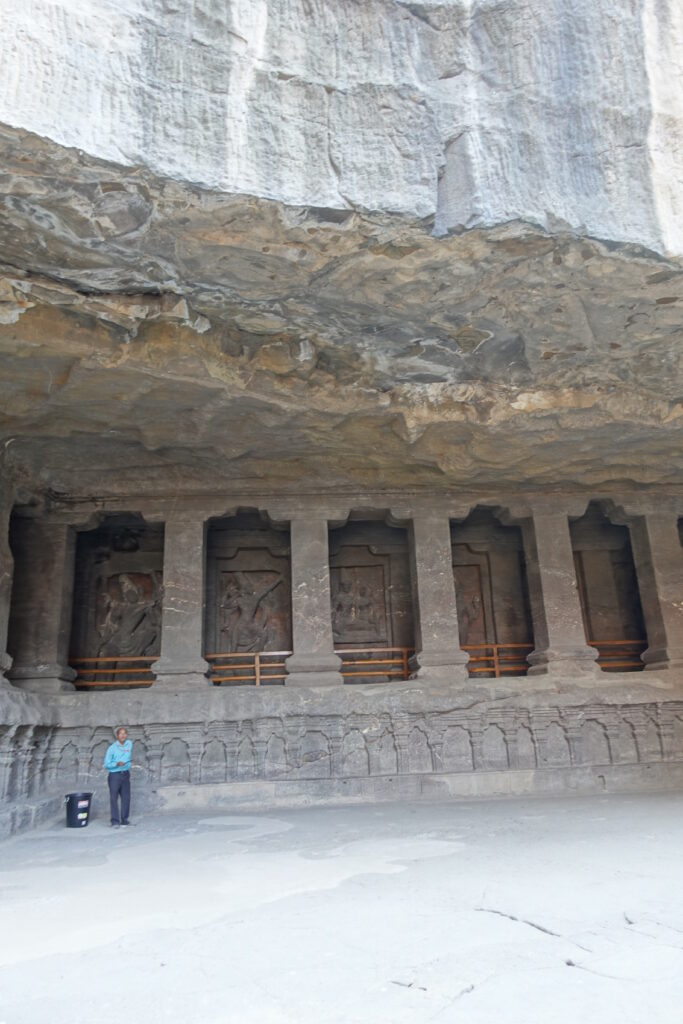
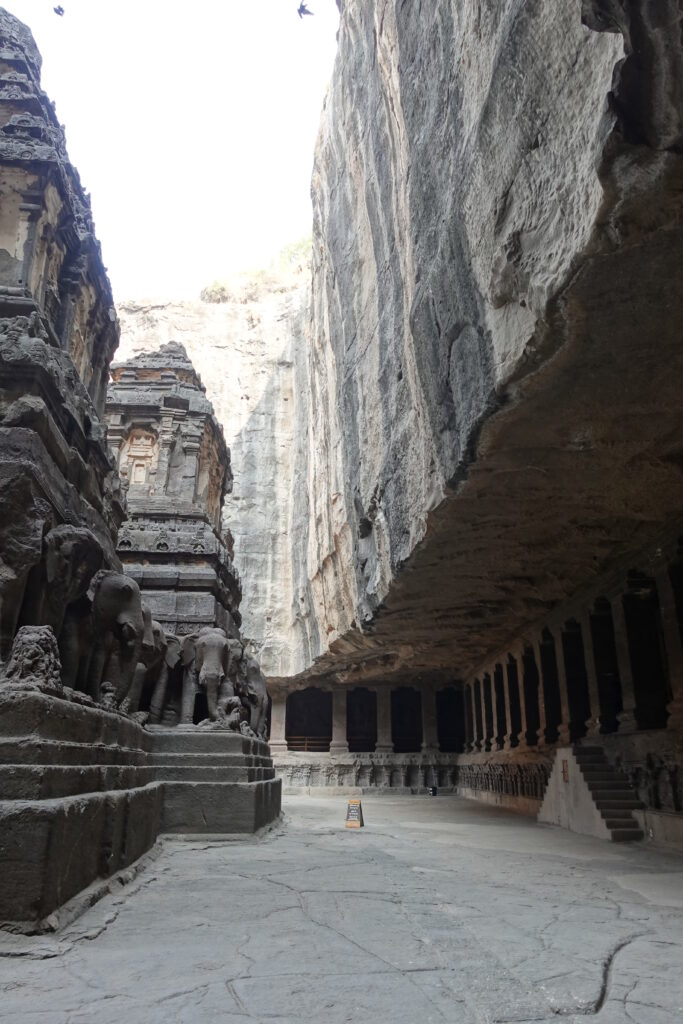
In addition, behind the rock wall surrounding the temple is a cloister, each of whose hermitage chambers is decorated with carvings of Lord Shiva, Lord Vishnu, and other deities.
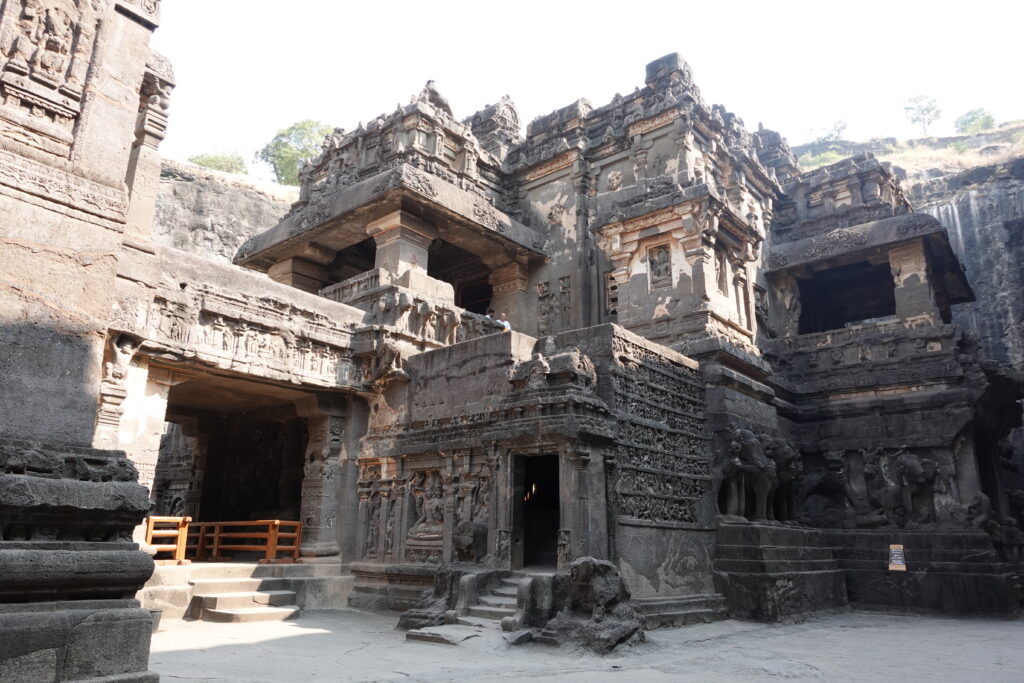
And here is the main temple of Kailasanatha Temple.
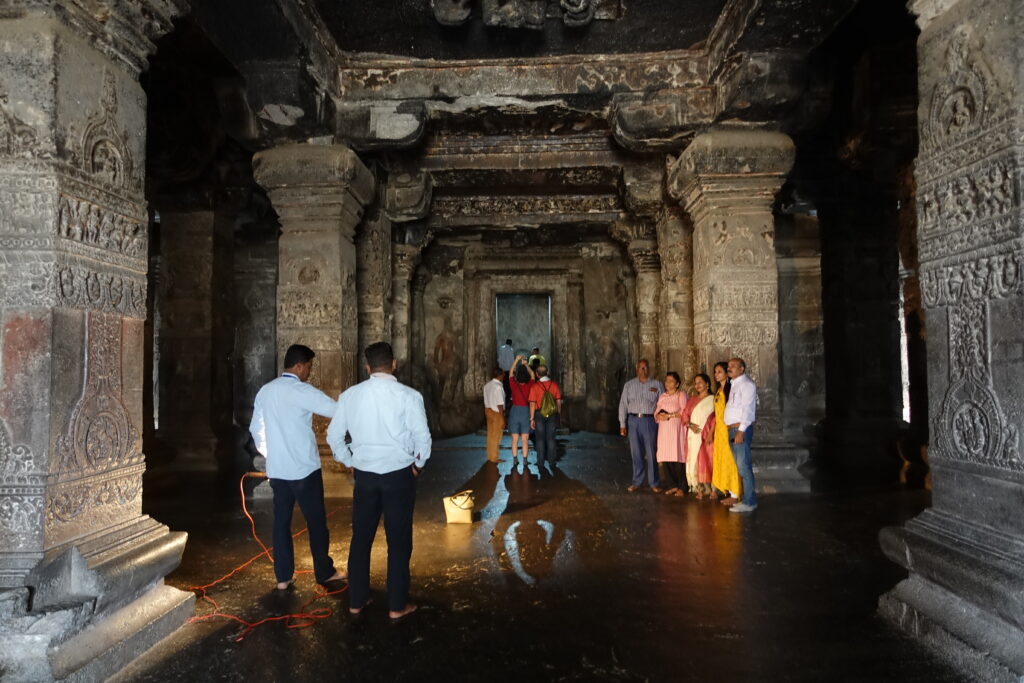
At the far end of the temple, Shiva Linga was enshrined.
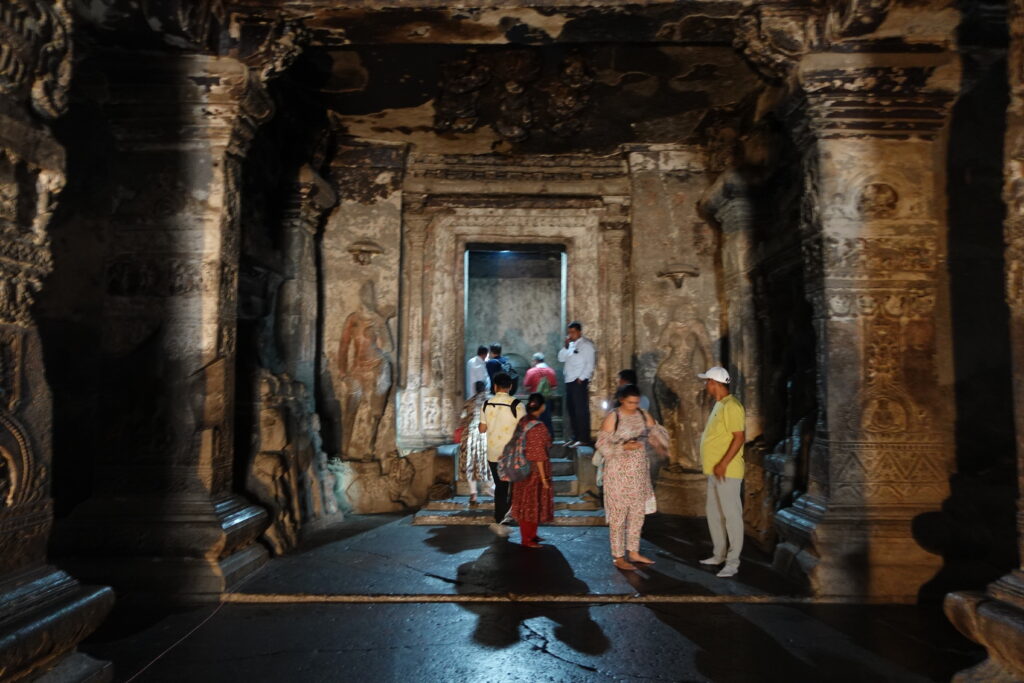
The interior structure and carvings are also amazingly detailed. Although the temple is so huge, each work is very detailed. And what can be said about it is that it has a good sense of style. There are almost no ornate ornamentation that is too showy. The exquisite degree of moderation, without overdoing it, is truly wonderful.
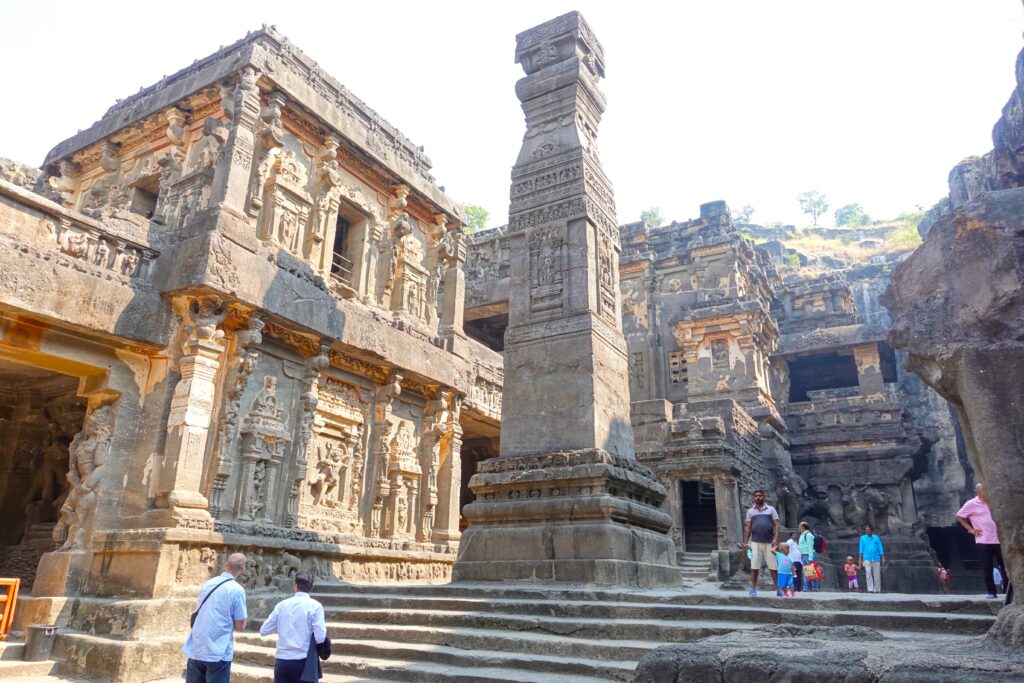
Perhaps inspired by the overwhelming energy of this temple, I felt strangely empowered just walking here.
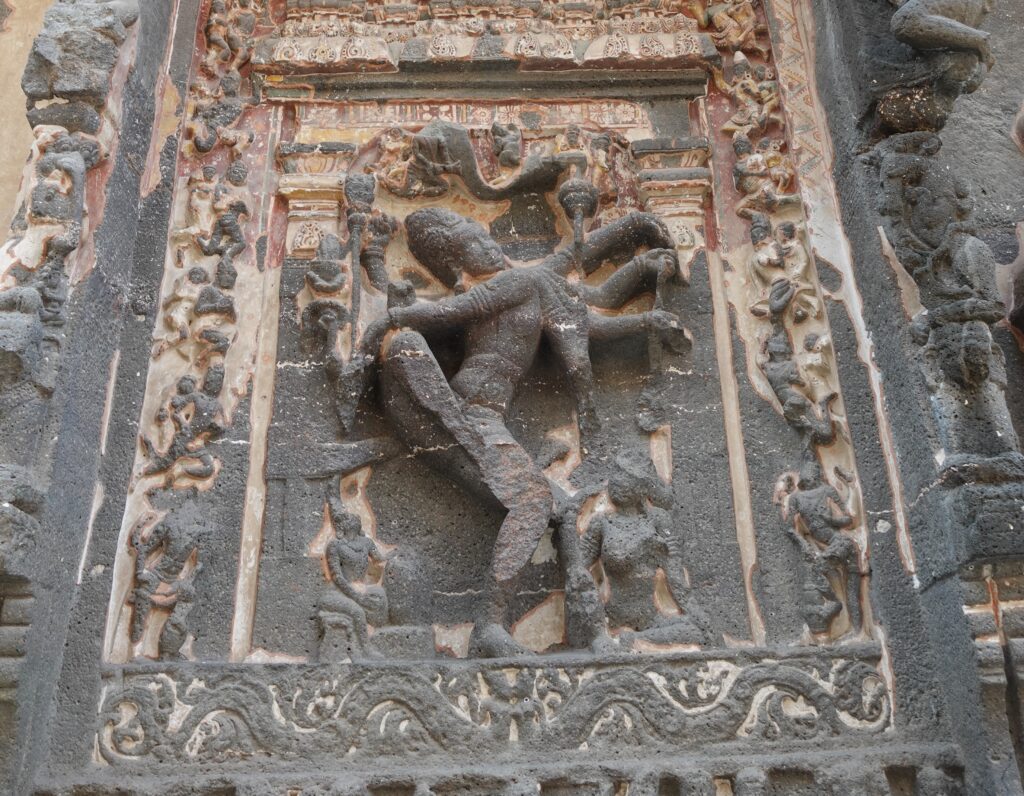
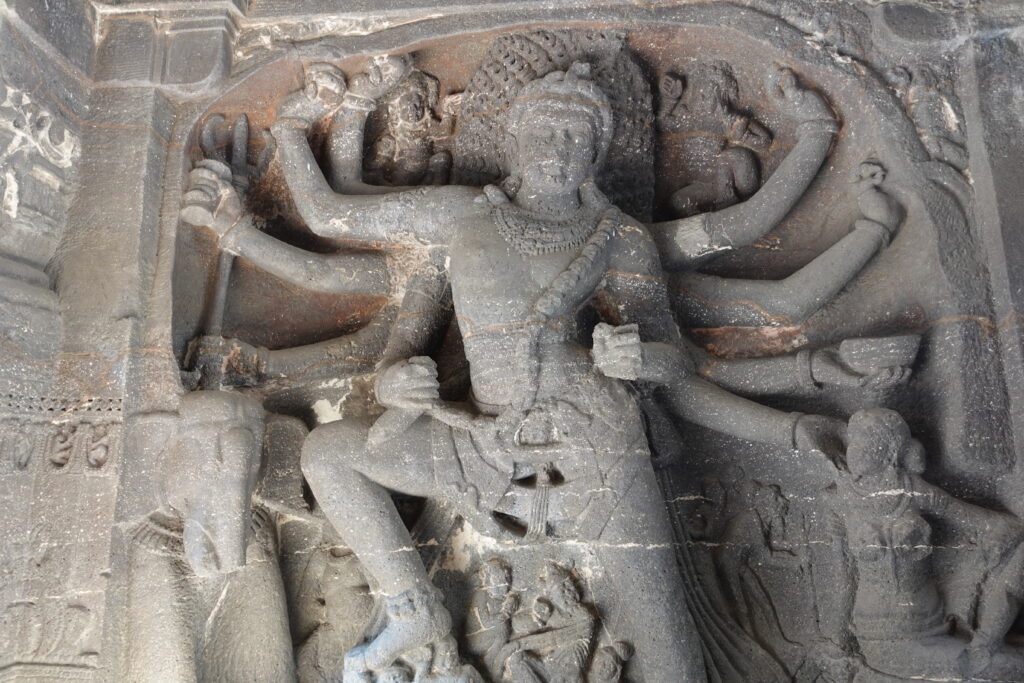
And since this temple is dedicated to Shiva, you will be confronted with numerous statues of Shiva, all with different variations. All of them are dynamic and full of life.
This is in sharp contrast to the Buddhist caves described in the previous article.
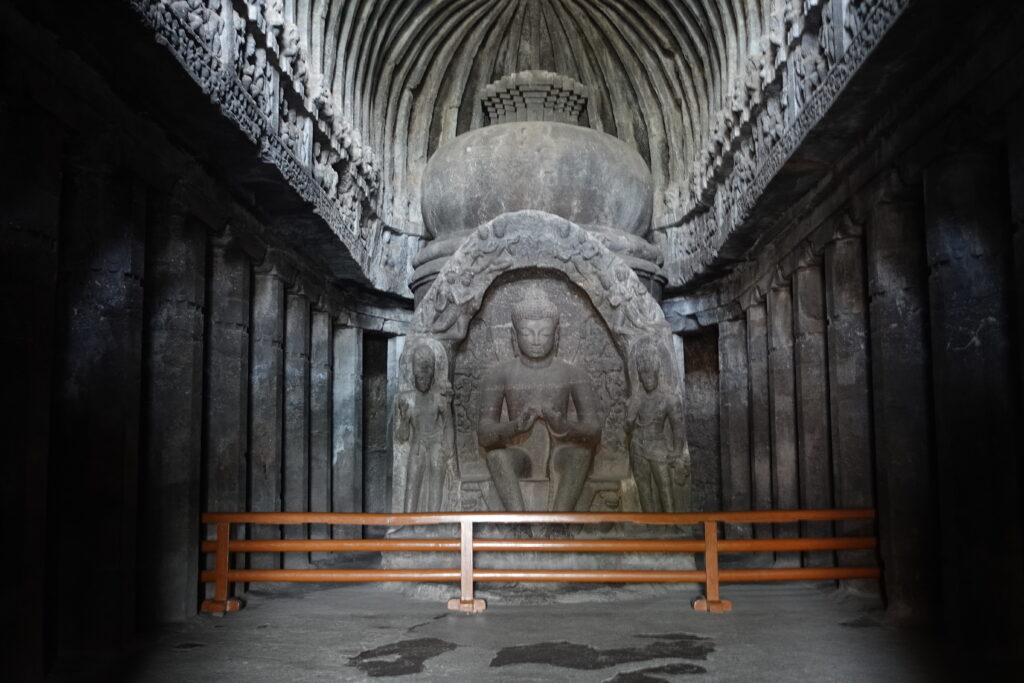
There is something here that is very different from the serene and peaceful atmosphere of the Buddhist caves.
(On this subject, Musashi Tachikawa and Jigo Omura co-authoredAjanta and Ellora: Rock Temples and Murals of the Deccan Plateau, IndiaThe following was preached in
In Hinduism, the gods are very human. They fall in love, become jealous, cast curses on others, fight, and sometimes die like Krishna. On the other hand, Buddhist "gods" such as Buddha and Amitabha do not fall in love or become jealous. Hindu gods are also deeply involved in the creation and collapse of the world. The Buddhas do not play a leading role in the mythology of the creation of the universe, except in the case of esoteric Buddhism (tantrism) from the eighth or ninth century onward.
Enter any of the Hindu caves of Ellora and you will find the gods dancing, fighting demons, and playing with their queens or husbands. The vibrant forms of the deities of Ellora do not inspire a strong will to abandon the desire to act, or to quench the appetites and even the sexual desires that are so inexplicably aroused in all living creatures. What is felt is the energy released as the world unfolds through a cycle of birth, growth, and extinction.
Shueisha, Musashi Tachikawa, Jigo Omura, "Ajanta and Ellora: Rock Temples and Murals of the Deccan Plateau of India," p. 111-112
When you leave the Buddhist cave and enter the Hindu cave, you feel that you have entered a different space, even though the interior plan of the cave is not so different from that of the Buddhist cave. In contrast to the Buddhist caves, where everything is trying to lead you to tranquility, you feel the power to inspire everything and make you dance.
Shueisha, Musashi Tachikawa, photo by Jigo Omura, "Ajanta and Ellora: Rock Temples and Murals of the Deccan Plateau of India," p. 58
Yes. I was one of those who were shocked when I came to this Kailasanatha temple from a Buddhist cave.
Here in Ellora, the difference between the Buddhist and Hindu views of the world and of human beings can be felt to this extent.
The Kailasanatha Temple is truly an explosion of energy. Here you can feel the energy of Hinduism, the immense mass of it, with your whole body.
There is no doubt that the Ellora Caves are the best in India. It is a miraculous place where you can enjoy the excellence of Buddhist and Hindu caves at the same time!
I would say that Ellora was the highlight of my India experience.
*Below is an article with reference books on India and Sri Lanka that we have referenced in this travelogue. Please refer to them.
periodA list of recommended reference books to help you learn about Indian history, religion, and culture."
periodA list of recommended books for "those who want to know more about Indian Buddhism."
periodA list of recommended books to help you get to know the Buddhist country of Sri Lanka."
Next Article.
Click here to read the previous article.
Related Articles











